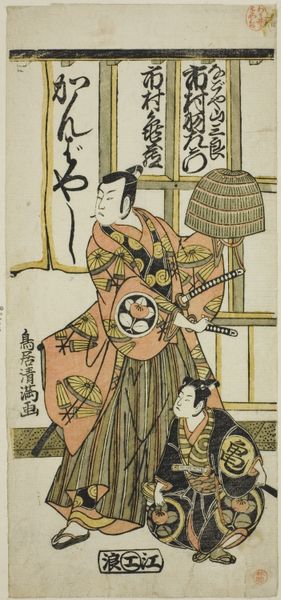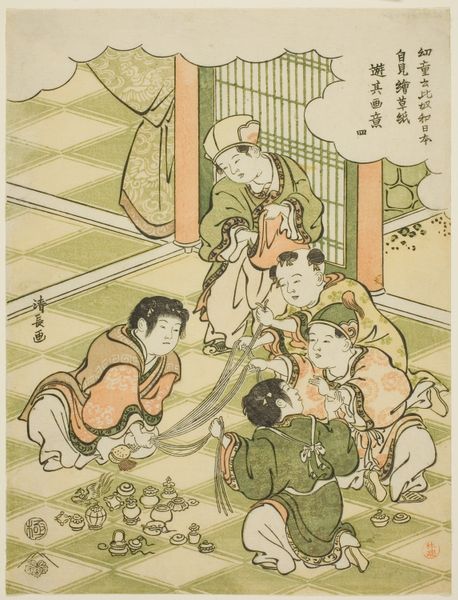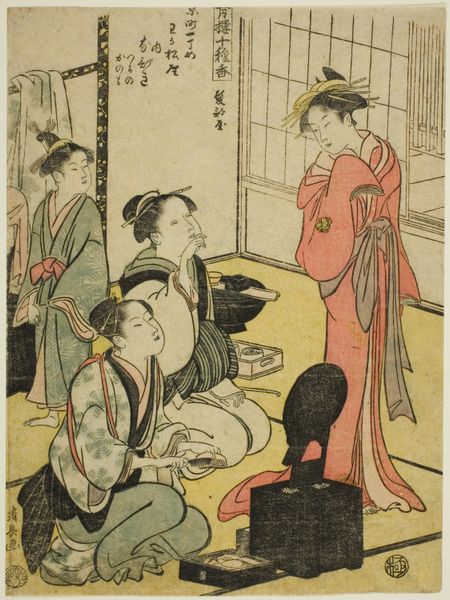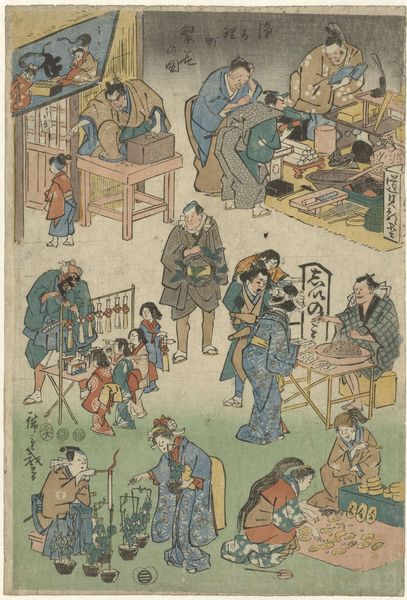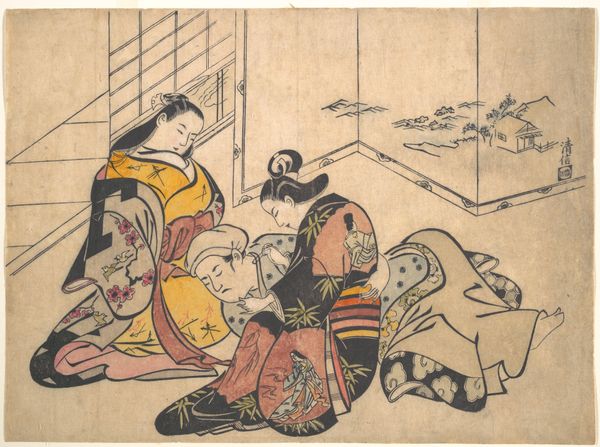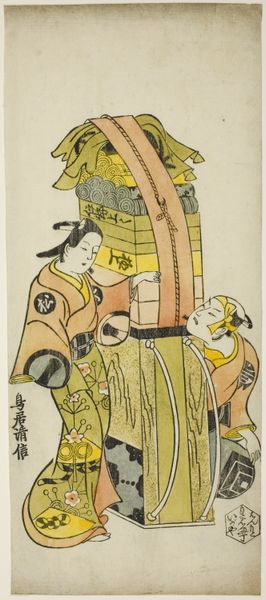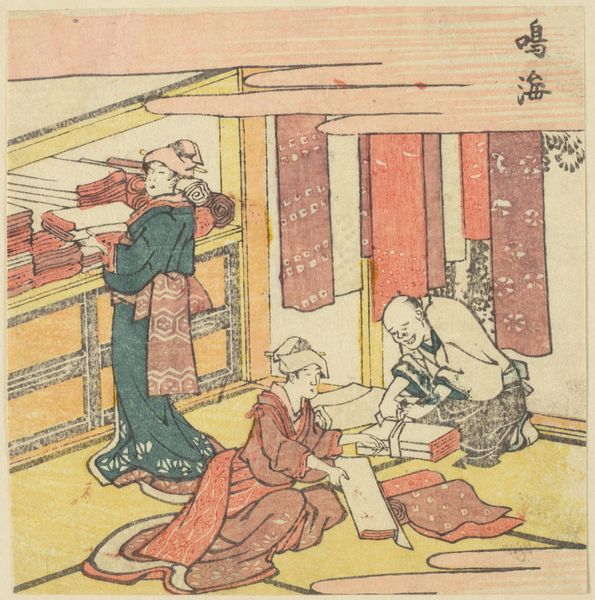
No. 2: Chinese boys copying paintings and writing Japanese, from the series "Children Say 'This is Japan!' and Imitate the Games They See in Picturebooks (Yodo iu koitsu wa Nippon, ezoshi o mite yori sono gai ni asobu)" c. 1791
0:00
0:00
drawing, print, ink
#
drawing
# print
#
asian-art
#
ukiyo-e
#
figuration
#
ink
#
genre-painting
Dimensions: 25.1 × 18.7 cm
Copyright: Public Domain
This woodblock print, made by Torii Kiyonaga in Japan, shows a group of children dressed in Chinese clothing, copying paintings and writing. The series to which this print belongs depicts children imitating games and activities they see in picture books, raising questions about cultural identity and representation. Kiyonaga worked during the Edo period, a time of relative peace and prosperity in Japan under the rule of the Tokugawa shogunate. This was also an era when Japanese society was highly structured, with strict social hierarchies and limited contact with the outside world. The presence of Chinese cultural references, such as clothing, calligraphy, and paintings, reflects Japan's historical relationship with China, a complex mix of admiration, emulation, and rivalry. The children’s act of copying suggests both a fascination with foreign cultures and a desire to assimilate or domesticate them. The print invites us to consider how cultural exchange shapes national identity and how artistic representations can reinforce or challenge prevailing social norms. Historical documents, literature, and art from the Edo period provide valuable insights into the cultural dynamics that shaped Kiyonaga's work.
Comments
No comments
Be the first to comment and join the conversation on the ultimate creative platform.



